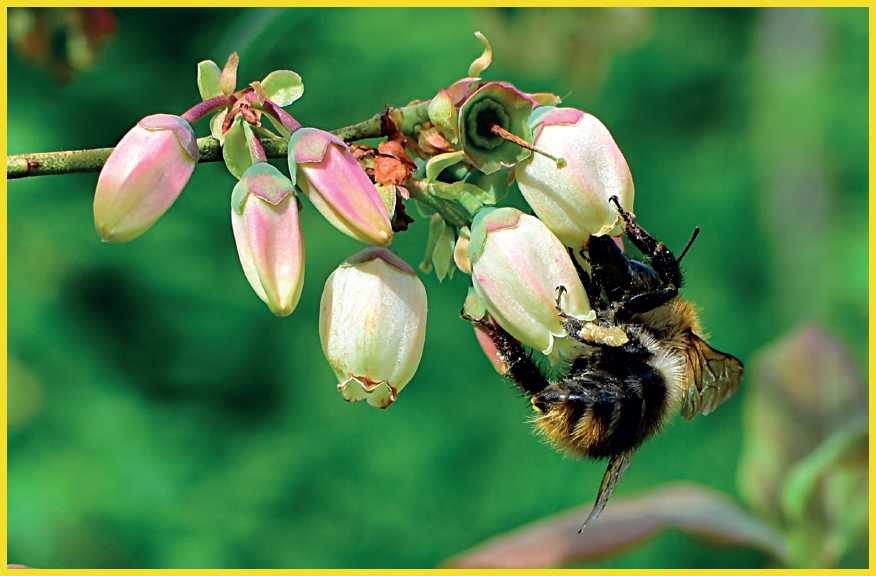5 Blueberry Digger
Habropoda laboriosa
Characteristics
Length: 0.51–0.63 in (13–16 mm).
Flight season: March–May.
Nectar sources: Blueberries.
Habitat: Swamps, cultivation, gardens.

The North American blueberry digger is only active for a short time each spring. Blueberry cultivation largely depends on this dark bee, which emerges just before the blueberries come into flower. These are solitary, ground-nesting bees. Females dig burrows in loose, sandy soil, and the larvae that emerge from their eggs feed on pollen and nectar left by the mother. They pupate, then emerge the following spring. Newly emerged males are sometimes so keen to find mates that they dig into the ground to find the females before they have emerged!
Although active for just three to five weeks, each female is believed to visit about 50,000 flowers during her short life, pollinating enough of them to produce 6,000 blueberries. The only way pollen can exit the plant’s stamen is from a small opening in the top, and then only when it is shaken. The secret of the blueberry digger’s success is that it latches on to the stamen and rapidly vibrates its flight muscles. This action shakes out the pollen, some of which attaches to the hairy bee and later sticks to the stigma of the next flower visited. Such “buzz pollination” is only practiced by some bees. Bumblebees can also do it, but they don’t emerge until later in the spring.